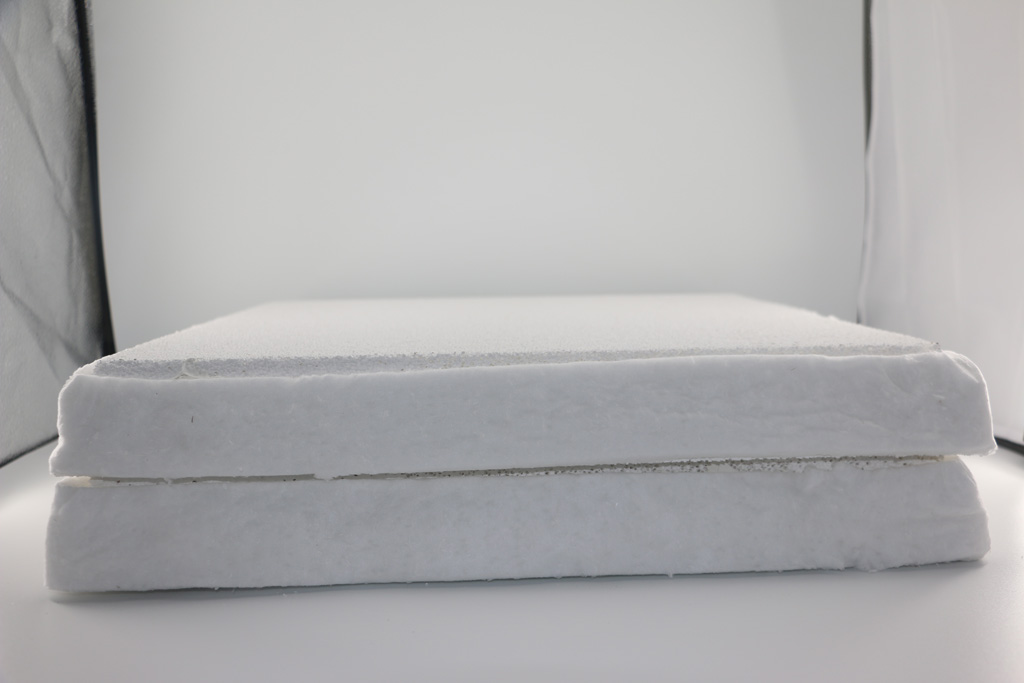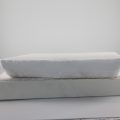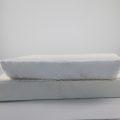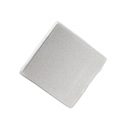Ceramic Foam Filter Manufacturers Product is mainly used for the filtration of aluminum and aluminum alloy in foundries and foundries.
It can effectively remove inclusions, reduce trapped gas and provide laminar flow, and then the filtered metal is significantly cleaner.
Due to their excellent resistance to molten aluminum erosion and corrosion, they continue to provide high-quality clean aluminum products during the aluminum casting process, with fewer waste products and fewer inclusion defects, all of which help increase profits.
Ceramic Foam Filter Manufacturers Products can be manufactured through specific procedures and have unique skeleton pores, just like the shape of foam (called three-dimensional communication channels) and countless holes (only found under a large microscope).
Compared with similar products, our products have the following advantages
1. Stable chemical composition
2. Outstanding strength
3. High temperature resistance
4. Calm the turbulence of metal well

Ceramic foam filter Dimension
660x660x50(26 inch)
584x584x50(23 inch)
508x508x50(20 inch)
432x432x50(17 inch)
381x381x50(15 inch)
305x305x50(12 inch)
228x228x50(9 inch)
178x178x50(7 inch)
Ceramic foam filter Pore Size (PPI): 10/20/30/40/50/60
Melting Point Of Aluminum
Aluminium is a metal found in the second row and Group 13 on the periodic table. It is the third most abundant element after oxygen and silicon to be found in the crust of the earth. Aluminium occurs naturally in compounds but never as pure metal. The process of extracting aluminum from its compounds is an elaborate and rather difficult. Aluminium is a useful and common metal that is known for being lightweight, its malleability, and corrosion resistant. Aluminium tends to be easier to recycle than to purify from ores. It is also safe enough when it comes in contact with skin and to be used around food.
What is the Melting Point of Aluminum?
The melting point of a substance is defined as the temperature at which the substance changes from a solid to a liquid state but at a specific atmospheric pressure. It is at the melting point that a substance’s liquid and solid states exist in equilibrium. However, a substance’s melting point mainly depends on pressure; it is often specific at a standard pressure in reference materials. A substance’s melting point is also referred to as liquidus, liquefaction point, or solidus. The melting point of aluminum is 659 degrees Celsius or 1218 Fahrenheit.
What is the Purpose of Determining the Melting Point of a Substance?
A substance’s melting point is an essential physical property. The main aim of determining the boiling points and melting points of substances during a lab experiment is to use the results to help identify impurities in those substances or unknown substances. An unknown solid’s melting point can be used to identify it by comparing it to a variety of other potential solids and their melting points thus making a match to identify the solid., the purpose of knowing a substance’s melting point is to use its melting point range to help determine its general purity . In this regard, the bigger the melting range of substance then the less pure the substance is while the more the melting point range decreases, the purer the substance.
Factors Affecting the Melting Point of Substances
The melting point of a substance varies from one substance to another. For instance, while oxygen melts at 218 degrees Celsius, ice melts at 0 degrees Celsius and aluminum is 219 degrees Celsius. Therefore, certain things affect the melting points of different substances. Factors affecting the melting point of substances include intermolecular forces, ionic bonds melting point variations, the shape of molecules and size of molecules. A pure compound that is crystalline usually has a more precise melting point thus completely melts over a small range of temperature not exceeding 0.5 -1 degrees Celsius. If such a substance contains even the slightest amount of impurities, depression is usually produced in the freezing points showing an increase in the width of the melting point range.If a melting point range is over five degrees, then it means that the substance is impure.
The Uses of Aluminum
Aluminum is one the world’s most useful metals. In its pure form, aluminum is primarily used by the electronics industry to make hard disk drives, conductor tracks on silicon chips, and capacitor foil. When the metal is alloyed with other metals such as silicon, zinc, copper, and magnesium, it becomes even stronger. Another significant use of aluminum is in the manufacturing of beverage cans and the foil used in protecting food and a variety of cooking utensils.













